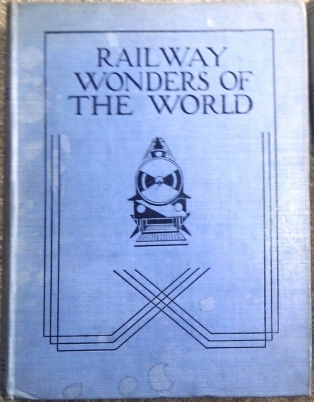
© Railway Wonders of the World 2012-


From an early stage, the publishers of Railway Wonders of the World made arrangements for "beautiful binding cases" so that the complete set of issues could be bound up like a book. This page gives further information about the binding service. The illustration shows an advert from the back page of part 4 illustrating the style of binding.
Binding Railway Wonders of the World


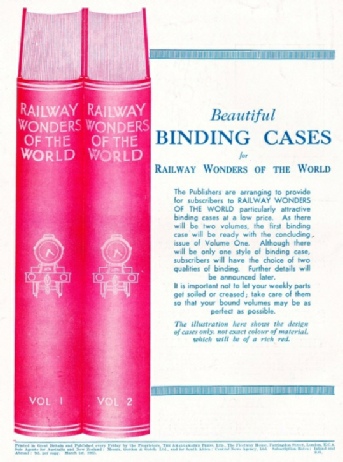
The illustration shows an advert from the back page of part 4 illustrating the style of binding.
The advert states "The Publishers are arranging to provide for subscribers to RAILWAY WONDERS OF THE WORLD particularly attractive binding cases at a low price. As there will be two volumes, the first binding case will be ready with the concluding issue of Volume One. Although there will be only one style of binding case, subscribers will have the choice of two qualities of binding. Further details will be announced later."
"It is important not to let your weekly parts get soiled or creased; take care of them so that your bound volumes may be as perfect as possible. The illustration here shows the design of cases only, not the exact colour of material, which will be of a rich red."
The illustration is for an interim design. It lacks the name of the editor on the spine, name and the pages for each volume. The latter is missing because at this stage each issue stated "to be completed in about 40 weekly parts" whereas the series was actually completed in 50 parts.
The final "standard" or “style 1” binding (shown left) was of a mid-red cloth, with gilt decoration to the spine. The front board was impressed with the title of the series and somewhat incongruously a cable car design. There was no table of contents, or dust wrappers provided, but the complete index (which formed most of issue 50) was included with volume two.
The "de luxe" binding (“style no. 2”) was of the same design, but the cloth used was a darker red, almost maroon. The top page edges were gilt, and a headband was provided. The binding itself was slightly heavier, being formed of six sets of stitches down the pages instead of the four provided with the standard binding.
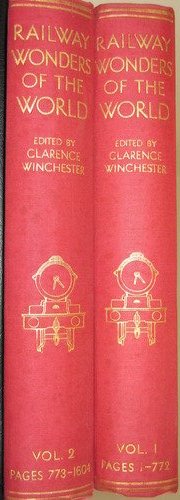
As Volume 1 neared completion, the binding adverts reappeared on the back page of the magazine, like the one illustrated left and below. These show the final amendments to the binding cases (ie the addition of the Editor’s name) but still omit the pages for each volume.
The “rich, red canvas binding cases with gilt lettering on the spine” cost 2s. each (10p). These could be ordered direct from the publishers and local arrangements made for binding. Alternatively the publishers undertook the binding of individual parts and two styles were offered.
Style No. 1 offered to bind the 24 weekly parts of Volume 1 in the binding case for 5s. (25p), which included the cost of the binding case, the cost of binding and return postage.
Style No. 2 was exactly the same as Style No. 1, but with one headband and gilt top to the pages. The charge for this service was 5s. 6d., including the 2s. charge for the binding case.
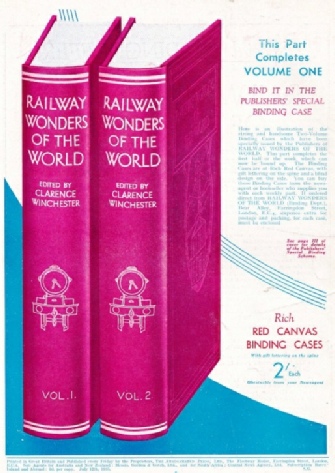
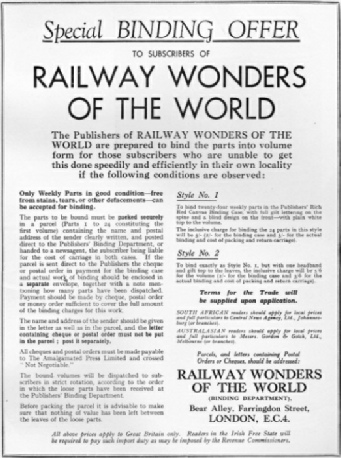
The full page advertisement shown right appeared inside the back pages of issue leading up to and just beyond the completion of
Volume 1.
It details the full terms and conditions for binding of the weekly parts, and lists the two styles of binding available.
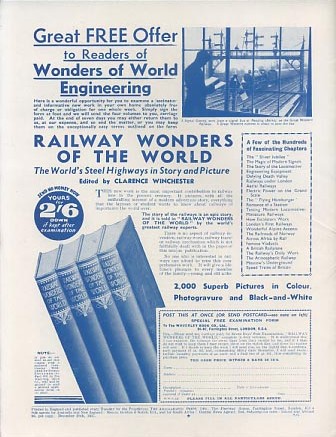
 A fourth binding variant has been noted, for which any further details are welcome.
A fourth binding variant has been noted, for which any further details are welcome. 